Believe it or not, you have more options for your health care than conventional medicine would have you believe. There is hope that certain natural remedies like essential oils and lifestyle changes, along with medical guidance, can help shrink ovarian cysts and improve your condition.
Read on to learn more about the three types of ovarian cysts, the best essential oils for ovarian cysts, and how to use them

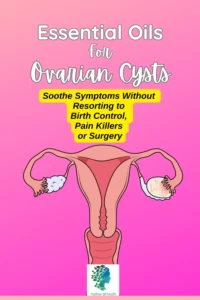
Imagine going to the doctor because of extreme period pain. You have been putting this off for as long as possible, but the pain has gotten too much to bear, and you want answers why. The test results have come back with a diagnosis of an ovarian cyst.
Defining Ovarian Cysts
Ovarian cysts are precisely what their names say: Fluid-filled sacs found on or inside your ovaries.
They are caused by hormones and hormonal imbalance. It's worth noting that nearly every fertile woman is going to have cysts a lot more than we're told.
Every month, a cyst-like structure called a follicle will make its appearance. Typically, a few cycles later, these follicles will decrease in size and then disappear on their own.
These are functional cysts and are generally painless. There's no need to treat a functional ovarian cyst unless they last over six months or gets inflamed as they are typically a sign that all systems are healthy. Most cysts are harmless and may disappear on their own.
Three Types of Ovarian Cysts
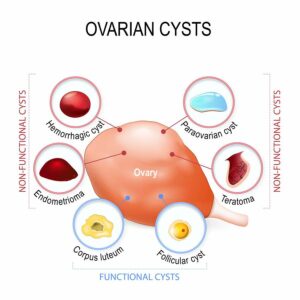
There are three types of ovarian cysts that cause problems. They are teratomas, cystadenomas, and the ever-dreaded endometrioma.
Teratomas
Teratomas are your best-case scenario in these cases. They are rarely cancerous. Teratomas form from embryonic cells and typically contain a variety of interesting tissue inside.
When biopsied, not only can you find the eponymous skin cells inside, but hair and teeth can also be found inside! The primary concern with teratomas is that they are collecting such objects.
They can get very large, increasing the chances that your ovaries will be moved out of their place and possibly even contorted. This can and does cause severe pain in your everyday life, especially when you are ovulating.
Cystadenomas
Cystadenomas come in a variety of types, but the most common of them is serous cystadenoma.
Serous cystadenomas make up about 60% of the non-functional cysts diagnosed. These are on the external “face” of your ovaries and are usually one of the easiest to locate. They are typically filled with watery fluid and have very smooth walls.
Cystadenomas can also grow to a large size, but unlike teratomas, there are several other risk factors. Cystadenomas are known to calcify, which will make them rock hard, and the pain is akin to gall or kidney stones.
This is also the group that holds cystadenocarcinoma, which is a severe and terrifying diagnosis. This malignant tumor makes up 80% of all its kind and makes up a horrifying 25% of all diagnosed ovarian cysts. These are the ones that begin with symptoms that make them feel like it's just a bad period, so often they get overlooked.
Endometriomas
Women fear endometriomas good reason. These are when your uterine lining grows outside of your uterus. The diagnosis of endometriomas is typically how endometriosis is discovered and diagnosed.
Sure, your uterine lining will continue to act as normal in the uterus – thicken, break down, and exit. But, with endometriomas, you're getting this tissue with no way of escaping safely. It will build up and break down, but stay in the area.
Since the rest of your body doesn't know how to deal with this process, much less your ovaries, this will irritate you.
As any woman who has endometriosis can tell you, this is exactly as painful as it sounds. Endometriosis has been extremely understudied and is still being researched to this day.
Estrogen's Role
All these cysts are related to your estrogen cycle and the natural buildup during your period. This is why birth control is often prescribed to help regulate your estrogen and your cycle, so the cysts begin to shrink. Medical research says birth control is an effective method to ease symptoms.
About Birth Control
There are a variety of reasons you may choose to not go with birth control. In the states, a good majority of medical insurance will not cover this prescription, making this an out-of-pocket expense.
Some women are trying to get pregnant when they discover ovarian cysts. Others are against birth control due to hormonal reasons or have a more personal reason not to want to go this route. As such, they research other methods of controlling the pain.
Polycystic Ovary Syndrome
It's crucial to understand Polycystic Ovary Syndrome (PCOS), often referred to as PCOS for short. In PCOS, women may exhibit a symptom known as polycystic ovaries, indicating the presence of multiple cysts in the ovaries.
Unlike ovarian cysts, polycystic ovaries typically do not cause pain, but they are a significant contributor to infertility.
Some women are trying to get pregnant when they discover ovarian cysts. Others are against birth control due to hormonal reasons or have a more personal reason not to want to go this route. As such, they research other methods of controlling the pain.
7 Top Essential Oils for Ovarian Cysts

Some skeptics will argue that results are psychosomatic, but there are specific essential oils to help with ovarian cysts. But, before you decide on your course of action, talk to your doctor about waiting a few months. This is called watchful waiting. Many ovarian cysts are benign and go away on their own.
If you decide to use essential oils, you should know a few necessary things. Most EOs are potent anti-inflammatory substances. They can relieve pain, and swelling, improve blood flow, manage symptoms, and even help the cysts to dissolve.
How to Use Essential Oils for Ovarian Pain and Cysts
The best way to relieve discomfort using an essential oil for ovarian cysts is to rub or massage the diluted essential oil into your skin, right over where the pain is.
To make your skin absorb it a little better, take a warm (but not hot) compress or a heating pad and place it over the area you applied your essential oil. This can be done daily if you so choose, and the results have proven to be generally better if you do. But, you can choose to do it only as needed to control the pain yourself without medicine.
Even if you do not have ovarian cysts, aromatherapy abdominal massage can soothe menstrual pain. They are also great for your PMS symptoms or general aches and pains, and they can decrease the amount of menstrual bleeding.
Using Essential Oils in the Bath
This method works by taking your essential oil and pouring enough into Epsom salts until absorbed by the salts. And then you use the Epsom salt in a bath.
This will infuse your bath water with essential oil and prevent the oils from lying useless on top of the water. Naturally, when you bathe, the water and oil will absorb into your skin and get to the affected area slowly.
What Essential Oils Should You Use?
1. Chamomile Essential Oil: Natural Relief for Symptoms

Chamomile essential oil may potentially improve the management symptoms through the following ways:
Pain Reduction:
Ovarian cysts can cause abdominal pain and discomfort. Chamomile essential oil is known for its natural pain-relieving properties. It may help alleviate the pain associated, providing relief and comfort.
Anti-Inflammatory Effects:
Chamomile contains compounds that have anti-inflammatory properties. Inflammation often accompanies ovarian cysts and contributes to pain and discomfort. Chamomile oil may help reduce inflammation in the pelvic area.
Stress and Anxiety Relief:
Chamomile essential oil is renowned for its calming and soothing effects. It may help reduce stress and anxiety, promoting relaxation and well-being.
Sleep Improvement:
Quality sleep is crucial for healing. Chamomile oil is often used to improve sleep quality. It can help you relax and get a better night's sleep, which is essential for recovery.
To use chamomile oil for cyst management, you can add a few drops to a warm bath before bedtime to relax your body and mind. Additionally, you can mix chamomile oil with a carrier oil (such as coconut oil) and gently massage it onto your lower abdomen where you may experience discomfort.
2. Frankincense, the Soothing Elixir

Frankincense oil comes from the resin of special trees. It is well-known to treat ovarian cysts because it helps to balance hormones and has strong anti-inflammatory properties. This plant can help manage irregular menstrual cycles and other hormonal-related fertility issues.
Anti-Inflammatory Properties:
Frankincense contains compounds with anti-inflammatory properties. Inflammation associated with this condition can cause discomfort. Frankincense may help reduce inflammation, easing pain and discomfort.
Pain Relief:
Ovarian cysts can cause abdominal pain and cramps. Frankincense's natural analgesic (pain-relieving) properties may provide relief from these symptoms.
Stress Reduction:
Stress can exacerbate your symptoms. Frankincense has calming and soothing effects that may help reduce stress and anxiety, promoting an overall sense of well-being.
Hormonal Balance:
Hormonal imbalances can contribute to cyst development. Some research suggests that frankincense may help balance hormones, potentially reducing the risk of cyst formation.
Immune Support:
Frankincense essential oil may support the immune system, helping your body better cope with cyst-related issues.
To use frankincense oil for management, dilute a few drops with a carrier oil, such as coconut oil, and gently massage the mixture onto your abdominal area. You can also diffuse frankincense oil in your room to benefit from its soothing aroma.
Frankincense is one of the most expensive oils. A 15ml bottle can easily cost you $75 because it is a potent oil.
Many people with endometriosis will use Frankincense because it typically offers quick relief, which has appeal during an episode.
Ginger Essential Oil: Your Ally for Ovarian Cyst Relief
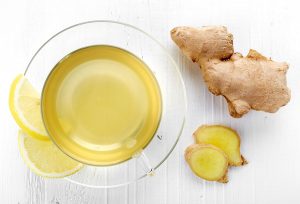
It is another popular oil for treating ovarian cysts. This oil may help improve the management of symptoms through its various properties and effects:
Anti-Inflammatory:
Ginger contains compounds that possess anti-inflammatory properties, which can help reduce inflammation and ease pain.
Pain Relief:
Ginger has natural pain-relieving qualities that can alleviate the cramps and aches providing relief from the pain and discomfort.
Nausea Reduction:
Some women with cysts experience nausea. Ginger is known for its anti-nausea properties and can help calm an upset stomach, making it easier to cope with cyst-related nausea.
Digestive Aid:
Ovarian cysts can sometimes cause digestive issues. Ginger aids digestion and can help soothe any digestive discomfort.
Hormonal Balance:
Ginger may assist in balancing hormones, which is essential, as hormonal imbalances can contribute to their development.
Cardamom Essential Oil: Comforting Relief
Cardamom may offer potential benefits in managing ovarian cyst symptoms through the following ways:
Pain Relief:
Cardamom essential oil has natural analgesic properties that may help alleviate abdominal pain and cramps.
Soothing Effects:
Cardamom oil has a warm and spicy scent that can provide a comforting feeling. This comforting aroma may help ease the emotional and physical discomfort.
Digestive Support:
Ovarian cysts can sometimes lead to digestive issues. Cardamom is known for its digestive benefits and may help soothe any gastrointestinal discomfort.
Hormonal Balance:
Cardamom may help balance hormones, potentially reducing the risk of cyst formation.
To use cardamom oil, you can mix a drop with your lotion and gently massage it onto your lower abdomen where you may experience discomfort. Alternatively, you can add a few drops to a diffuser to enjoy its comforting aroma.
Ginger and Cardamom Together is Better
A good mixture is ginger and cardamom. It has a spicy scent that packs a powerful punch against inflammation, which can reduce a good amount of pain.
Cypress Essential Oil Symptom Management
Cypress may potentially help in managing ovarian cyst symptoms through the following mechanisms:
Reduction in Heaviness:
Ovarian cysts can sometimes cause a feeling of heaviness or pressure in the lower abdomen. Cypress oil may help reduce this sensation, providing relief from discomfort.
Improved Circulation:
Cypress oil is known for its ability to enhance blood circulation. Improved circulation can promote healing and alleviate some symptoms.
Emotional Support:
Health issues can be emotionally challenging. The fresh and clean scent of cypress oil may have a calming and uplifting effect, helping to reduce stress and anxiety.
To use cypress oil, add a few drops to a bowl of hot water and gently inhale the steam. This can provide a soothing and refreshing experience. Alternatively, you can mix cypress oil with a carrier oil, like coconut oil, and massage it gently onto your lower abdomen.
Geranium Essential Oil: Easing Ovarian Cyst Discomfort
Geranium is perfect for anyone who has a menstrual cycle problem. It may potentially aid in managing symptoms through the following ways:
Hormonal Balance:
Geranium essential oil may help balance hormones, potentially reducing the risk of cyst formation and alleviating related symptoms.
Pain Relief:
Geranium oil has natural analgesic properties that may help alleviate pain and cramping.
Emotional Support:
Geranium oil is known for its calming and mood-enhancing effects, which can help reduce stress and anxiety associated with the condition.
Anti-Inflammatory Effects:
Geranium oil contains compounds with anti-inflammatory properties that may help reduce inflammation in the pelvic area.
To use geranium oil, you can mix a few drops with a carrier oil (such as coconut oil) and gently massage it onto your abdominal area where you may experience discomfort. You can also add geranium oil to a diffuser to enjoy its pleasant floral scent, which can provide emotional support.
5. Peppermint Essential Oil: Cooling Relief
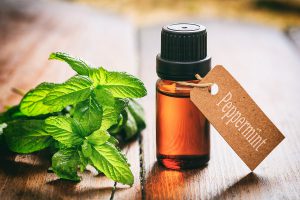
Peppermint may potentially aid in managing ovarian cyst symptoms in the following ways:
Nausea Relief:
Cysts can sometimes cause nausea. Peppermint oil is well-known for its anti-nausea properties and can help soothe an upset stomach, making it easier to cope with cyst-related nausea.
Pain and Cramp Reduction:
Peppermint oil has natural analgesic properties that may provide relief from the discomfort of abdominal pain and cramps.
Cooling Sensation:
The cool and refreshing sensation of peppermint oil can provide a soothing effect, potentially reducing the perception of pain and discomfort.
Stress Reduction:
Peppermint oil's invigorating aroma may help reduce stress and anxiety, promoting a sense of relaxation.
To use peppermint oil, you can put a drop or two on a tissue and gently sniff it when you feel queasy. Alternatively, you can add a few drops to a diffuser to enjoy its invigorating scent in your room.
For temporary relief of symptoms, consider mixing peppermint into your blend. It's a strong scent on its own and strong oil. But it's one of the few oils whose results are nearly immediate, so it will effectively relieve pain until the rest of your blend can kick in.
Use a Carrier Oil
You need to use carrier oil because essential oils are very concentrated substances. Always dilute your essential oils with a carrier oil. I like to use up to 10-15 drops of essential oil per ounce of carrier oil. But you can and should start with a lower concentration initially.
How Castor Oil May Help
Castor oil is often touted as a natural remedy that may provide relief for ovarian cysts. While research on the topic is limited, some evidence suggests that castor oil packs may offer benefits for ovarian cysts.
Applying warm castor oil packs to the lower abdomen may help manage symptoms and increase circulation, reduce inflammation, and promote the breakdown and elimination of ovarian cysts.
Essential Oil Recipe for Ovarian Pain and Cysts
Here is an essential oil recipe for ovarian cysts to ease the pain – Use externally.
-
Peppermint essential oil: 5 drops
-
Frankincense essential oil: 5 drops
-
Cardamom essential oil 2 drops
-
Ginger essential oil 2 drops
Before You Go
In managing ovarian cysts, it's vital to explore beyond conventional medicine.
While options like birth control pills and surgery exist, natural remedies such as essential oils, coupled with lifestyle changes, can offer hope for symptom improvement.
Understanding the various cyst types, from relatively harmless teratomas to more concerning cystadenomas and endometriomas, sheds light on potential challenges.
Essential oils have gained attention for their ability to reduce pain, inflammation, and swelling associated with ovarian cysts. They can be applied topically on the lower abdomen or infused into baths for gradual relief.
Specific oils like chamomile, frankincense, ginger, cardamom, cypress, geranium, and peppermint offer unique benefits, from pain relief to hormonal balance.
However, consulting a healthcare professional for a comprehensive treatment plan is essential, ensuring a holistic approach to managing ovarian cysts alongside conventional medical care.
Check out Simply Earth and use Discount Code MOHFREE. When you subscribe you'll receive a $40 gift card with your first order and a FREE Bonus Box too.
Simply Earth is an inexpensive monthly essential oil subscription box company. Each month they'll send you everything you need to make healthy, easy, fun self-care and household products. You can learn more about how it works here.
Don't forget to follow us on Pinterest. Thank you for your time and reading.
The information presented here is in no way meant to serve as medical advice. It is merely information and opinion. All information, content, and material of this website is for informational purposes only and are not intended to serve as a substitute for the consultation, diagnosis, and/or medical treatment of a qualified physician or health care provider. If you are experiencing symptoms of any kind, please consult with your physician.
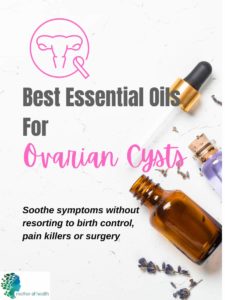

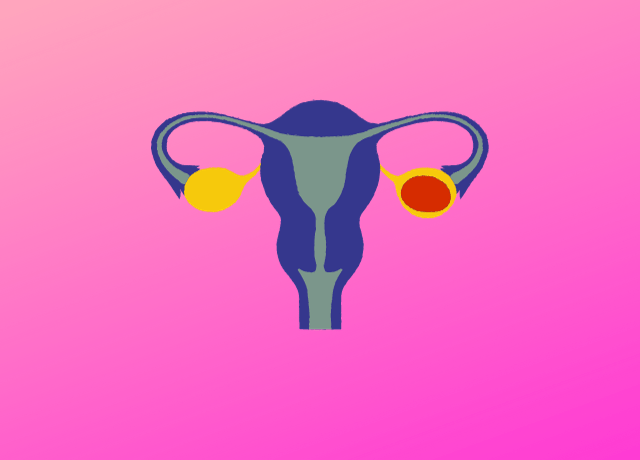
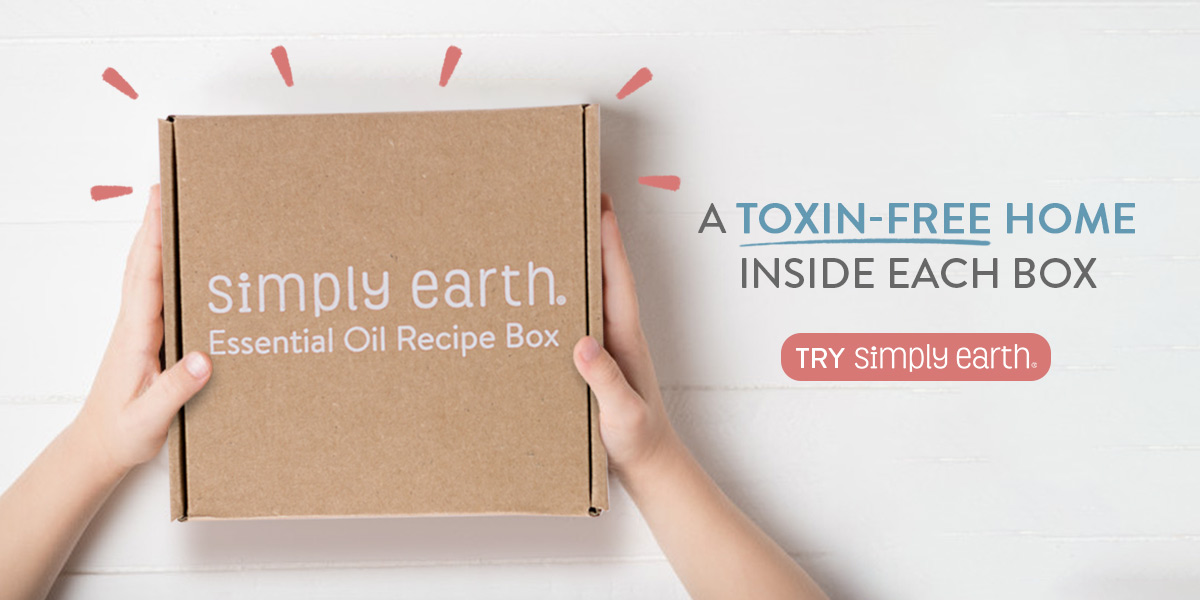
 WOMB TEA/ Yoni Tonic – Warming, balancing, rejuvenating tea for women; menstrual pain/cramps, skin dryness, fertility issues, fibroids, hormones, cold hands and feet
WOMB TEA/ Yoni Tonic – Warming, balancing, rejuvenating tea for women; menstrual pain/cramps, skin dryness, fertility issues, fibroids, hormones, cold hands and feet